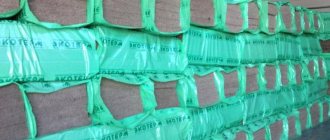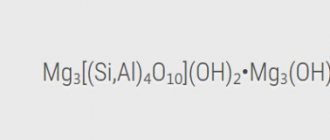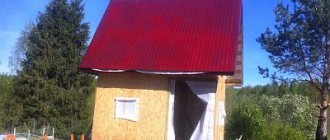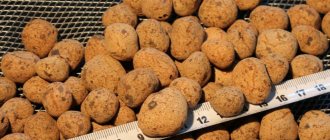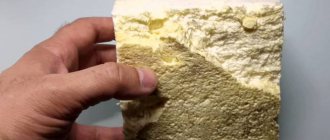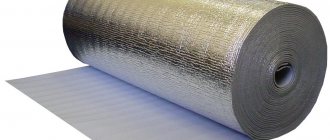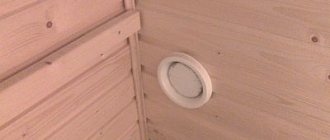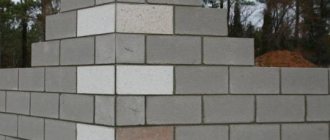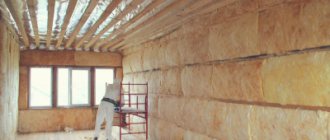Innovative technology for the production of foam glass.
The essence of the new innovative technology for the production of foam glass is that crushed cullet is mixed with a solution of specially prepared liquid reagents, which modify the surface of glass granules, forming nano-sized films on them with a thickness of 100-120 nanometers. Further heat treatment of the resulting materials leads to the synthesis of glass without the use of a blowing agent, which is necessary in the classical technology for the production of such products.
Description:
Traditional - classical technology for the production of foam glass involves the following technological operations. Glass granules and broken glass are ground using ball mills mixed with a blowing agent (coal) into a fine powder and loaded into molds made of heat-resistant steel with kaolin coating. The molds are transported on trolleys and on a roller conveyor to the tunnel kiln. Under the influence of high temperature, glass powder particles soften and sinter. Gases released during combustion and decomposition of the gas-forming agent swell the viscous glass mass.
When cooled, a material with a cellular structure is formed. Slow cooling (annealing) promotes uniform cooling of products throughout the volume, so internal stresses do not arise in them and cracks do not form. Cooled products are sawn, trimmed on sawing equipment and packaged.
The gas environment of completely closed glass cells does not interact with the atmosphere and consists mainly of oxides and carbon compounds. The pressure of the gaseous medium in the cells is an order of magnitude lower than atmospheric pressure, because the foaming process occurs due to the release of gases by coke, anthracite and soot at a temperature of about +1000 ° C. Due to gas formation and glass foaming, the volume of glass increases 15 times.
The essence of the new innovative technology for the production of foam glass is that crushed cullet is mixed with a solution of specially prepared liquid reagents, which modify the surface of glass granules, forming nano-sized films on them with a thickness of 100-120 nanometers. Further heat treatment of the resulting materials leads to the synthesis of glass without the use of a blowing agent, which is necessary in the classical technology for the production of such products.
This innovative technology for the production of foam glass, based on nano-sized modification of the surface of dispersed glass, is based on low-grade cullet, which is inexpensive and widely available in any region of Russia, the amount of which increases in municipal solid waste annually by tens of millions of tons.
The peculiarity of the innovative technology is that it makes it possible to produce foam glass on the surface of which the so-called ASR reaction (the interaction of silicon oxide in foam glass with alkali in the cement binder) does not occur. Foam glass, on the surface of which the ASR reaction does not occur, allows for its installation, gluing, plastering, etc. using a widely available cement binder. Such foam glass can be used as a filler for structural lightweight concrete for the manufacture of enclosing structures and floor slabs without damaging the building structure.
granulated foam glass blocks buy Krasnoyarsk production in Novosibirsk ketov scientific and technological aspects volume line technological equipment for the production of granular slab foam glass in Russia at home price factories mini plant for the production of foam glass buy production volume of foam glass in granules
Source
What is foam glass, the history of its creation
Foam glass is a heat-insulating material that is obtained through heat treatment at a temperature of about 1000ºC of silicate glass and gas-forming raw materials (anthracite, coke, soot, etc.). As a result, foaming occurs, leading to an increase in the volume of the mixed components by approximately 15 times.
Foam glass is an excellent thermal insulation material
The resulting mass is molded and cooled without forced cooling, making the material strong and durable.
Foam glass is produced by heat treatment of the raw material mixture at a very high temperature.
The material has a porous structure
Despite the fact that foam glass was invented in the 30s of the last century by the Soviet physicist-crystallographer Academician Alexander Isaakovich Kitaigorodsky, it was first put into practice in Canada. Only half a century later, after improving technology and reducing production costs, the material gained recognition and began to be used as an inexpensive and effective insulation.
Technology for making foam glass at home
Many owners of country cottages try to do as much work as possible on their own and make some building materials with their own hands.
Important! The technology for producing high-quality foam glass involves heating it to 1000°C, which makes it impossible to manufacture at home.
Currently, there are few manufacturers in Russia producing the material. Entrepreneurs can hire this niche and start manufacturing foam glass and make good profits from this business.
Cutting foam glass at the factory
Powder production from broken glass is a popular and fairly simple method. It consists of several stages:
The production of any type of foam glass is possible only in factory workshops. The entrepreneur will have to rent premises and equipment capable of maintaining a consistently high temperature throughout the day. The simplest production method is to use cullet. To equip a foam glass production plant, it is necessary to purchase equipment to perform the following actions:
Equipping a foam glass production line is not a cheap undertaking. But at the same time, all types of equipment are easy to find on sale. If you have financial resources, equipping the plant will not cause any difficulties.
The use of products made from modern building materials allows you to quickly complete installation work. Builders can choose one of the types of thermal insulation material with the necessary characteristics. The table shows the main characteristics:
| Density, kg/m 3 | Thermal conductivity coefficient, W/(m*°C) |
| 200 | 0,07 |
| 300 | 0,09 |
| 400 | 0,11 |
When calculating the required thermal insulation thickness, values corresponding to operating conditions are taken. They depend on the humidity conditions of the interior and the humidity zone. The latter indicator depends on the area where the object is located. A large amount of moisture leads to saturation of the material with water and a decrease in its thermal insulation properties.
When producing foam glass, you can give the materials any look. They will differ from each other depending on the purpose, shape, and structure of the cells. Depending on the purpose, there are 3 types:
Materials are available in the form of bulk solids, blocks or slabs. There are shaped and slope-forming models. Bulk materials are divided into granulated foam glass and crushed stone. Products in the form of slabs are used for insulation and soundproofing of facades and foundations, and granules or crushed stone are poured inside structures and form a good thermal insulation layer.
Products in the form of slabs are easy to cut and lay. But they are much more expensive than their bulk counterparts. They are used in the construction of outbuildings, low-rise buildings, and the construction of walls of monolithic buildings.
Kinds
Shaped products
The use of products from modern building materials allows you to quickly complete installation work. Builders can choose one of the types of thermal insulation material with the necessary characteristics. The table shows the main characteristics:
| Density, kg/m3 | Thermal conductivity coefficient, W/(m*°C) |
| 200 | 0,07 |
| 300 | 0,09 |
| 400 | 0,11 |
*
When calculating the required thermal insulation thickness, values corresponding to operating conditions are taken. They depend on the humidity conditions of the interior and the humidity zone. The latter indicator depends on the area where the object is located. A large amount of moisture leads to saturation of the material with water and a decrease in its thermal insulation properties.
When producing foam glass, you can give the materials any look. They will differ from each other depending on the purpose, shape, and structure of the cells. Depending on the purpose, there are 3 types:
- thermal insulation;
- soundproofing;
- special ones designed for road construction, waterproofing systems, creating architectural forms and protection from electromagnetic waves.
Bulk foam glass
Materials are available in the form of bulk material, blocks or slabs. There are shaped and slope-forming models. Bulk materials are divided into granulated foam glass and crushed stone. Products in the form of slabs are used for insulation and soundproofing of facades and foundations, and granules or crushed stone are poured inside structures and form a good thermal insulation layer.
Products in the form of slabs are easy to cut and lay. But they are much more expensive than their bulk counterparts. They are used in the construction of outbuildings, low-rise buildings, and the construction of walls of monolithic buildings.
When producing foam glass, it can be given any look. Forms are used for this. Due to this, shaped products are often used to insulate complex architectural forms.
Cells can be closed or open. In the first case, the percentage of water absorption of the material decreases. It retains its thermal insulation properties even in humid environments.
Foam glass slabs
Specifications
The popularity of the building material is due to its unique technical characteristics:
Fire protection is important during construction. The material does not burn, so it can be used to construct any building. It is safe for humans, does not emit harmful substances even with strong heating, and does not pollute the environment.
Foam glass withstands the effects of various chemical environments (except for hydrofluoric acid), is not subject to corrosive destruction, and is not afraid of biological influences (rodents, insects). Mold does not form on the surface, the material does not rot. When constructing a building or other facility, ease of installation of building materials is important. Due to the small tolerances in the production of foam glass, it has high accuracy and stable dimensions.
Laying foam glass
The material is convenient to use. It can be easily cut into blocks of the required size using hand tools. But foam glass is heavy even with air bubbles. Glass products are fragile and do not tolerate violations of installation technology. When hit by a heavy object, the slabs crack and become unusable.
Important! Glass blocks are almost impervious to steam. They are not susceptible to mold, but other wall materials can become unusable due to too much indoor humidity.
It is convenient to create ventilated facades from foam glass.
Manufacturers of foam glass in Russia
It is impossible to make foam glass at home even with special equipment. To ensure the operation of furnaces, a special room and professional workers are required.
The raw material for production is broken glass. It melts, fills with many small air bubbles and gradually cools. The cooling mass hardens and acquires greater strength. Thanks to the use of various forms, products can be given any shape and material can be manufactured for various construction purposes.
Oven for baking foam glass
In Russia, a small number of enterprises are engaged in the industrial production of foam glass:
Most manufacturers offer a large selection of products made from this material. Builders can choose material for various construction purposes (insulation, low-rise construction, erection of walls of a monolithic building).
Source
Foam glass. Traditional and new technologies
Back in the 30s of the 20th century, Soviet academician I. I. Kitaigorodsky created a new material based on the special property of silicate glasses - at temperatures of about 1000 ° C in the presence of a gas generator, they soften and foam. Cooled glass melt is very strong and resistant to mechanical stress.
Scientists, when developing this material, intended to use mainly its buoyancy, but it turned out that foam glass has excellent heat-insulating and sound-proofing properties. The use of this material as a heat insulator began in the 40s in Canada, and became widespread in Europe and America. In the USSR, foam glass was not so widely used, since its production was not developed, and the material had a high cost.
In recent years, the production of foam glass has begun to actively develop, because this material has unique properties and performance characteristics that are superior to other insulating materials. First of all, foam glass is an absolutely environmentally friendly material that does not emit harmful substances even when exposed to high temperatures. The temperature resistance is very high; foam glass does not burn and can withstand heating up to 600°C. Foam glass is not subject to destruction throughout its entire service life, it does not crumble, is not saturated with moisture and is not subject to corrosion.
Foam glass is a completely inorganic material, therefore, when using it in the construction of a country cottage, you do not have to be afraid that it will be destroyed by rats, insects or microorganisms. With its high strength, this material lends itself well to mechanical processing and can be given any shape. Installation of foam glass is also not a problem; it can be attached using any modern building mixtures. Since foam glass is a lightweight material, the weight of the entire building, and, consequently, the pressure on the foundation, is reduced, and construction becomes more economical.
The high compressive strength inherent in foam glass also helps to reduce the cost and speed up construction, as it makes it possible to avoid reinforced ties when installing floors, to reduce unloading belts when arranging facades, etc.
Foam glass is produced in the form of blocks, granules and crushed stone; the scope of application of these types of foam glass varies slightly. The blocks can be used as thermal insulation in the construction of walls, roofs, basements, as well as in the construction of pipelines. Foam glass blocks serve as excellent protection for granaries and can act as fire-barrier structures. Granules are used as backfill insulation and filler for lightweight concrete. Crushed stone can be used in the same way as foam glass granules in road construction.
The raw materials used for the production of foam glass are rocks such as trachyte, syenite, nepheline, obsidian, volcanic tuff, as well as ordinary glass waste, that is, cullet generated during the production of sheet, container, electrical glass, and crystal products.
Foam glass ceramics
The development of technology and the use of innovative solutions made it possible to develop a process for manufacturing foam glass without the use of expensive cullet, and, accordingly, to exclude grinding operations from the technological process. The new technology involves the use of inexpensive raw materials - siliceous rocks such as diatomite, opoka, tripoli, and zeolite. The peculiarity of these rocks is that, unlike river sand, they contain silicon in amorphous rather than crystalline form.
Materials made using new technologies are called “foam glass ceramics”; they retain all the performance properties inherent in foam glass, but can be used not only as insulation, but also as structural and thermal insulation materials. Foam glass ceramics do not require additional protection from moisture, like cellular concrete, for example, and can reduce the number of structural layers and simplify the wall structure.
The thickness of a wall built from foam glass-ceramic blocks is 6–12 cm less than the thickness of a wall made from traditionally used materials. The technology for manufacturing foam glass ceramics allows the use of coloring pigments, so it is possible to obtain building blocks of various colors that do not require plastering and painting.
Characteristics and properties
1) Excellent thermal insulation properties.
2) Fire safety. Foam glass crushed stone is a non-hot material, marked NG.
3) Environmental safety. The raw material for crushed stone is ordinary glass, which does not contain harmful and/or dangerous impurities for humans both at the production stage and during operation. In addition, the use of cullet ensures the use of recycled materials.
4) Bulk density is an important indicator with which it is possible to calculate the required volume and check the amount of materials delivered by the supplying company. The indicator for foam glass crushed stone differs depending on the size of the fractions and the manufacturer. The data varies widely, enterprises provide indicators of transport density, which is 110-140 kg/cub.m., operational density with compaction of 10-20% - 110-170. The maximum bulk density is 1350 kg/cub.m. True density , a reference value rarely used in practice, is about 2200 kg/cub.m.
5) Low water absorption. The ability of materials to absorb moisture, for crushed foam glass, does not exceed 3%.
6) High noise insulation properties. Tests demonstrate that the use of crushed stone when installing floating screeds provides an improvement in sound insulation by more than 21 dB.
7) Light weight. Foam glass crushed stone is distinguished by its low weight per cubic meter, this figure varies from 100 to 160 kg.
 High compressive strength. Despite its lightness, crushed stone has a high strength index - 0.95-4.8 MPa.
High compressive strength. Despite its lightness, crushed stone has a high strength index - 0.95-4.8 MPa.
9) Foam glass and products made from it are characterized by durability , ensured by the following properties:
10) Frost resistance - an indicator demonstrating the number of freezing and thawing cycles that crushed stone can withstand without losing its own characteristics. Frost resistance of foam glass materials is approximately 100 cycles.
11) Cost-effective. The use of foam glass crushed stone simplifies the work process and reduces the amount of required consumables. In addition, durability, lightness and resistance to aggressive influences allow you to save on transportation and storage.
